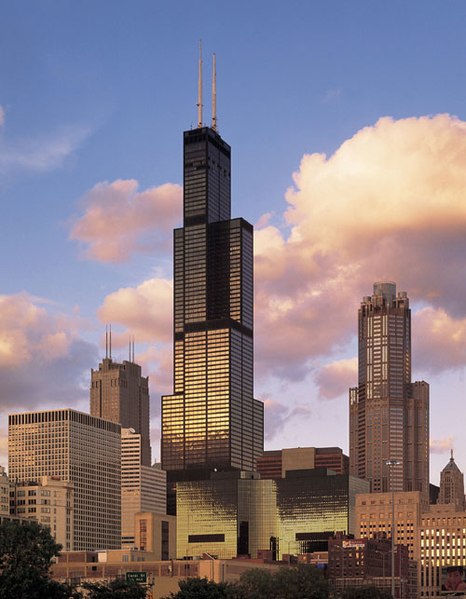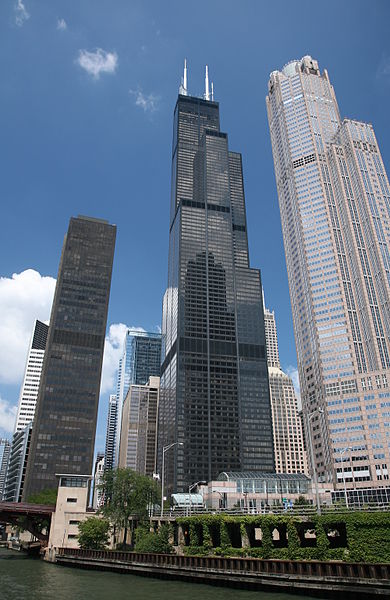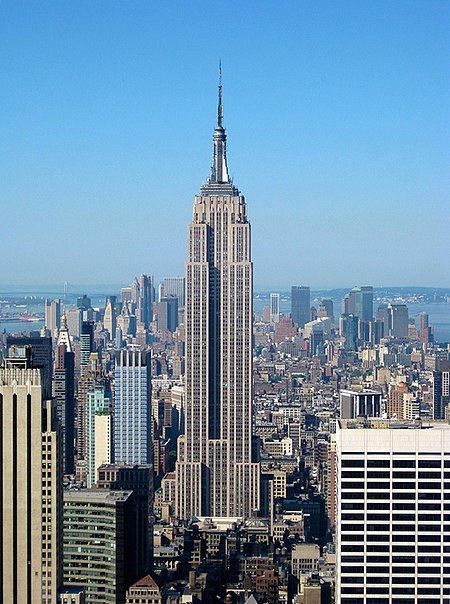
Willis Tower (formerly named and still commonly referred to as Sears Tower) is a 108-story, 1,451-foot (442 m) skyscraper in Chicago, Illinois. At the time of its completion in 1973, it was the tallest building in the world, surpassing the World Trade Center towers in New York, and it held this rank for nearly 25 years. The Willis Tower is the second-tallest building in the United States and the eighth-tallest freestanding structure in the world. The skyscraper is one of the most popular tourist destinations in Chicago, and over one million people visit its observation deck each year.
Named the Sears Tower throughout its history, in 2009 Willis Group Holdings obtained the right to rename the building, as part of their lease on a portion of its offices. On July 16, 2009, the building was officially renamed the Willis Tower. On August 13, 2012, United Airlines announced it will be moving its corporate headquarters from 77 West Wacker Drive to the Willis Tower.

La Torre Sears o Sears Tower (renombrada actualmente como Torre Willis) es un rascacielos de 442 metros en Chicago, Illinois. En el momento de su inauguración, fue el edificio más alto del mundo, sobrepasando el World Trade Center en Nueva York, y continuó siéndolo durante más de 20 años. Con 442 metros (sin contar antenas), la Torre Willis es la segunda torre más alta de América, despues de la Torre CN, y la más alta de Estados Unidos, superando por 27 metros al Trump International Hotel and Tower, también en Chicago.
Si bien los derechos de nombre de Sears vencieron en 2003, el edificio se continuó conociendo como "Torre Sears" (Sears Tower) por varios años. En marzo de 2009, Willis Group Holdings, acordó un contrato de arrendamiento de una parte del edificio y obtuvo los derechos del nombre de la torre. En julio de ese mismo año, fue oficialmente renombrado "Willis Tower" (Torre Willis).










